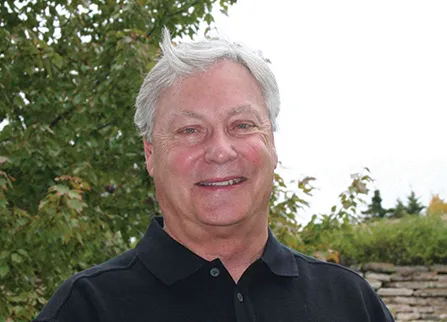By John Schlageck, Kansas Farm Bureau
Several images surface as we dust off the cobwebs of our minds and reflect back on rural Kansas and those days of years gone by. Red barns, silver-steel windmills, cream separators, harvest crews, Burma Shave signs and certainly the outhouse come to mind.
While many have tried to describe (or forget) the typical Kansas privy, each was as different and original as the men whose job it was to build them. This column is dedicated to those prairie dwellers across Kansas who, in the middle of pioneering this great state, still took time for moments of contemplation.
Kansas outhouses were a reflection of its people – the region of the state where they settled and where they came from back in the Old Country. Each was a classic in its own right, inherent of early settler architecture – the sturdy and inspirational “Little House on the Prairie.”
To Midwesterners and High Plains dwellers the outhouse has always seemed a fitting memorial to the ingenuity and practicality of our forefathers – those restless, imaginative spirits who first caught the scent of opportunity in the westerly breeze. And for all its many charms, the privy has gone the way of the mail-order catalog which it had such a long and intimate relationship.
Heck, some old timers in the community I grew up in went so far as to label an outhouse the very seat of government – a place where equality of all people was perceptible and indeed undeniable.
Built with a few broad boards, wide sweeping strap hinges and a bold slice cut through the doorway, it was as solidly based as the distant barn itself. Usually a two-seater, it was equipped with flies, hornets, mosquitoes, spiders, corncobs or a Sears & Roebuck.
Normally it was located at a safe, but convenient distance from the main house, at the end of a cinder path and behind a lilac bush – hence the old expression, “I’m going out to smell the lilacs.”
Yes, at one time in our state’s history, a privy was certainly an interesting topic of discussion. Talk to today’s old timers or seniors and they’ll probably break into a broad smile and share an experience or two of their time spent in the privy.
While we always enjoyed indoor plumbing, I can remember Sundays at my Uncle Lloyd’s in Phillips County. His family still used an outdoor toilet.
I was less than thrilled about doing my business in this dark, dank establishment. To begin with, there was a distinct odor I wasn’t fond of. I could never relax while imagining the black widow spiders lurking below me just waiting to send me to an early grave.
One story I’ll never forget involved a certain Volga German who built an outhouse shrine to himself less than a stone’s throw from his family dwelling. This structure was built with notched corners, manly hinges and a husky thumb latch.
Strong and solid, this structure was a match for any prairie cyclone. The old gent loved his retreat and spent many an hour in his palace on the prairie.
His wife, on the other hand, considered this privy overbuilt, unnecessary and she remarked on more than one occasion that she wished the main house she lived in were as well built as her husband’s “s_ _ _ house.”
And one more story I recall became legend in northwestern Kansas. It was told about a special outhouse named Granny’s Glory. Built by Grandpa who adored his bride of 50-some years, this wonderful little privy faced the eastern Kansas sky and included a nice southern window that cast a soft light on Granny’s reading material.
The dear old dame made and hung the curtains herself. When the couple died, the grandchildren couldn’t bring themselves to tear down the decaying monument.
Yessiree Bob, the outhouse is a part of our rich Kansas heritage we will never flush away.
John Schlageck is a leading commentator on agriculture and rural Kansas. Born and raised on a diversified farm in northwestern Kansas, his writing reflects a lifetime of experience, knowledge and passion.



